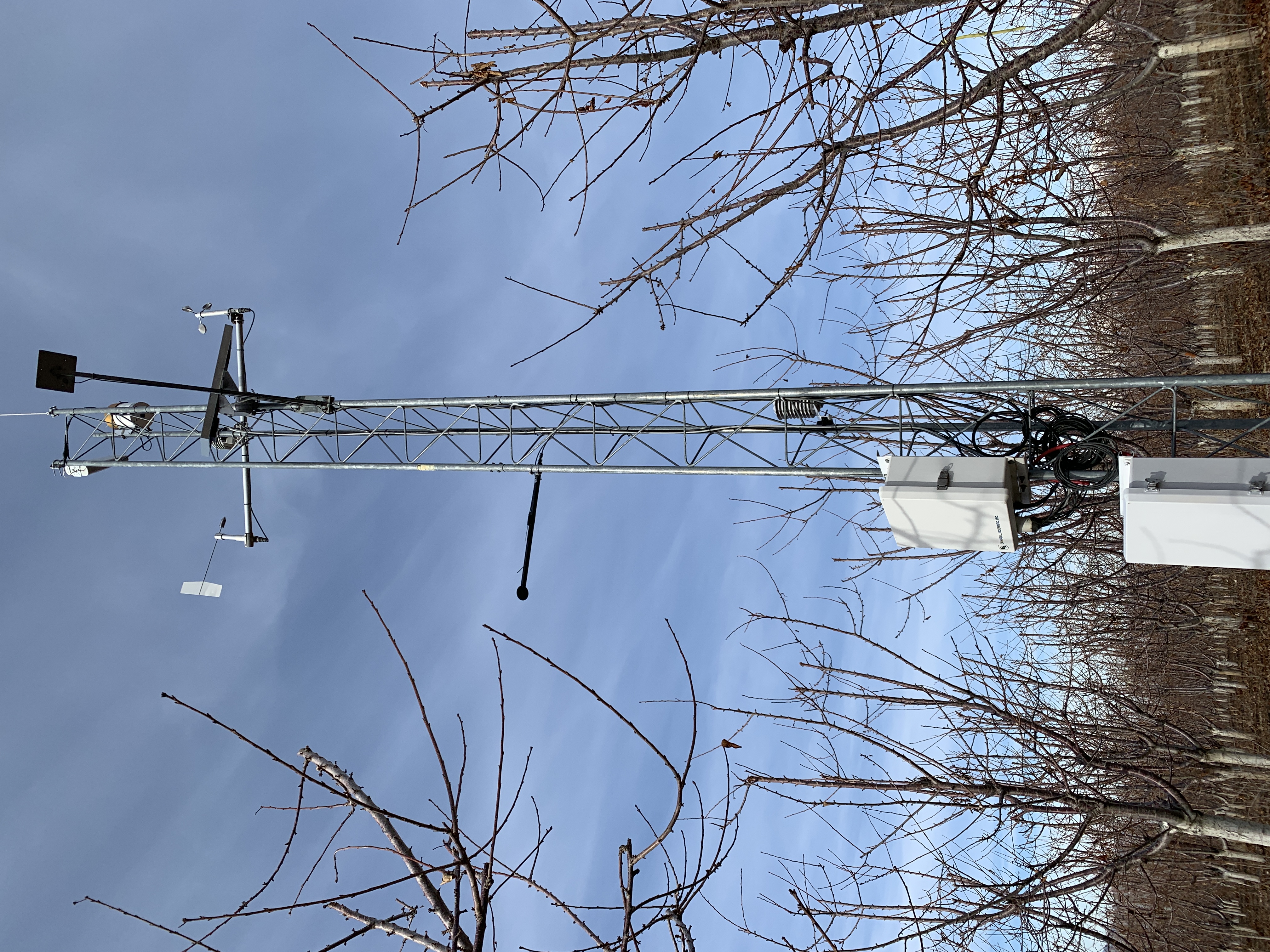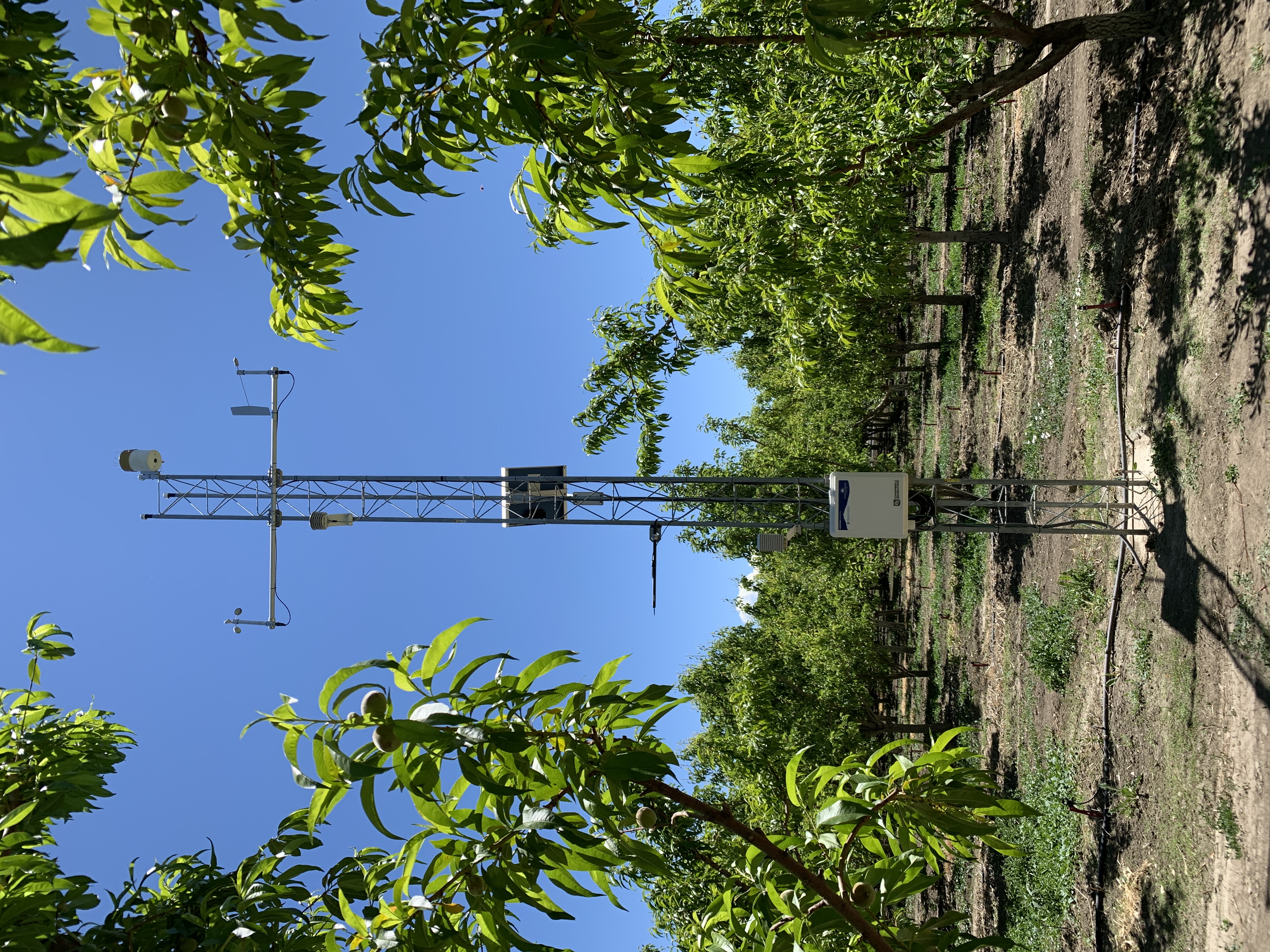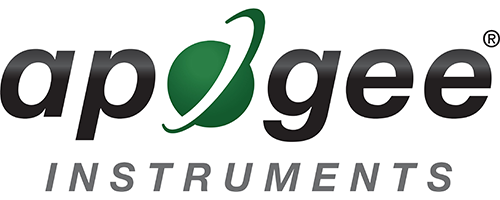Fruit Grower Network of Radiation Frost Monitoring
The Utah Climate Center and Utah State University Extension's Integrated Pest Management program use Apogee's SF-110-SS Leaf and Bud Temperature sensors to help orchardists monitor radiation frost events to prevent crop damage and save money by better timing the use of frost mitigation equipment. Here is a description Jobie Carlisle provided about their work:
We are using Apogee's simulated leaf and bud temperature sensors at weather stations in 23 orchards in Utah and Idaho (a summary of this network of stations follows). The stations are the Fruit Grower's Network of weather stations (FGNet) and Timing Resource and Alert for Pests Utility (Utah TRAPs). We use SF-110-SS sensors that were deployed around 2012. Orchards are predominantly apple, peach, and cherry trees. Historically orchardists used air temperature, wind speed, and forecasting to help them decide when to initiate frost mitigation measures - measures that can cost up to $15,000 per hour! Many of the fruit growers we work with find tree damage is greatest in the predawn hours when winds are calm and surface temperatures are lowest due to radiative loss. In an effort to quantify leaf and bud temperature during these times, we installed Apogee SF-110 leaf and bud temperature sensors.

After discussions with growers following damaging frosts, we realized that radiation frost data is not often considered because it is not well understood. When it is measured, the use of costly frost mitigation can be controlled more precisely saving crops and the cost of running turbines and gas burners before or after they are needed. Our aim is to educate growers on how to interpret and use this sensor to mitigate losses due to radiation frosts.

果实种植者的天气站网络(FGNET)和针对害虫实用程序的时间资源和警报(犹他州陷阱)
The Utah Climate Center and USU Extension's Integrated Pest Management program have partnered to provide climate based web utilities to assist orchardists to model insect, disease frost potentials, and to monitor drought stress within orchards. Weather data is collected from a network of 21 mission tailored weather stations located in orchards in 8 Utah counties (Cache, Box Elder, Weber, Davis, Utah, Washington, and Juab). Daily, hourly, and current conditions data as well as the web utilities are available to orchardists and the public on the Climate Center's website:http://climate.usu.edu/.
网上实用程序,犹他州陷阱(针对害虫的时间资源和警报),包括主要用于树木果虫的害虫管理信息,包括编码蛾,桃树枝挖掘机,西樱桃果蝇和火灾枯萎。在选择地理位置后,关注的害虫和当前日期之后,将提供有害生物候选的概述(%蛾飞行和%蛋舱口)以及基于当前日期值的管理选项(学位天是蓄热单位)。例如,过去的orem中的苹果种植者在过去遇到了Codling蛾类的侵害现在可以使用该网站来确定应申请治疗的确切日期。几位种植者评论说,由于治疗时机的精度较高,他们的水果从未被“更清洁”。
In addition to the pest and disease prediction tools, we have an alert system for frost and critical disease potential. Orchardists can choose to enroll for a cell text or email notification when conditions that require action are reached. Participants can customize an alert profile, selecting the weather stations to monitor, alert triggers, and the frequency and mode of the messaging. This is a free service.
